You are reading this article because you are interested in plants with spiky leaves.
Plants with spiky leaves have long been considered an ideal natural razor wire for ensuring security by protecting estates from raiding invaders and serving as cattle barriers. Its narrow foliage, sharp spines, and serrated margins provide your garden with an organized and aesthetic form.
10 Plants with Spiky Leaves
Plants with spiky leaves add variety to your collections and help defend your garden. Some of the most well-known plants with spiky leaves are listed below:
- Agave Plants (Agave)
- Prickly pear cacti (Opuntia)
- Lace Aloe (Aloe aristate)
- Venus Flytrap (Dionaea muscipula)
- Snake Plant (Dracaena trifasciata)
- Yellow Tower Cactus (Parodia leninghausii)
- Aralia Spinosa (Aralia Spinosa)
- Cirsium vulgare (Cirsium Vulgare)
- Haworthia (Haworthiopsis attenuate)
- Holly Plant (Ilex)

Table of Contents
Plants with Spiky Leaves
Plants with spiky leaves can be grown in your garden to give it an aesthetic look. Some plants are easy-to-grow and best for beginners.
The best plants for your garden can be identified according to their location, soil type, weather conditions, and unique characteristics.
1. Agave Plants
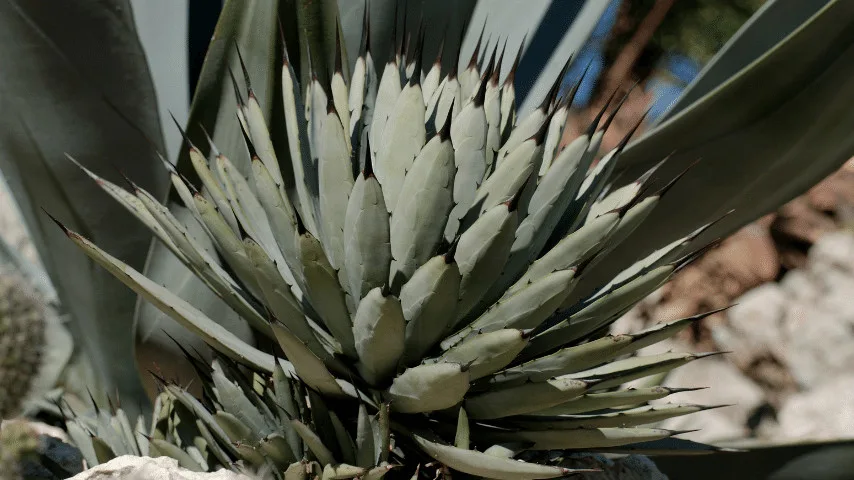
Several agave cultivars are available, notably those that can be grown inside. With their steel-blue leaves, Agaves are among the most famous spiky plants.
Agave plants’ most noticeable feature is its height, approximately 6 feet high. They generate single bloom and then perish.
Agaves take a long time to develop flowers, but they have many tiny plants growing from the bottom of the plant that can replenish the deceased one.
Its tall spiky leaves mix gently to generate a crown and lovely cup-shaped flower heads, making it ideal for decorating large gaps.
Agaves have green or grey-colored foliage that is surrounded by small spikes. They need sufficient sunshine and a porous substrate.
2. Prickly Pear Cacti
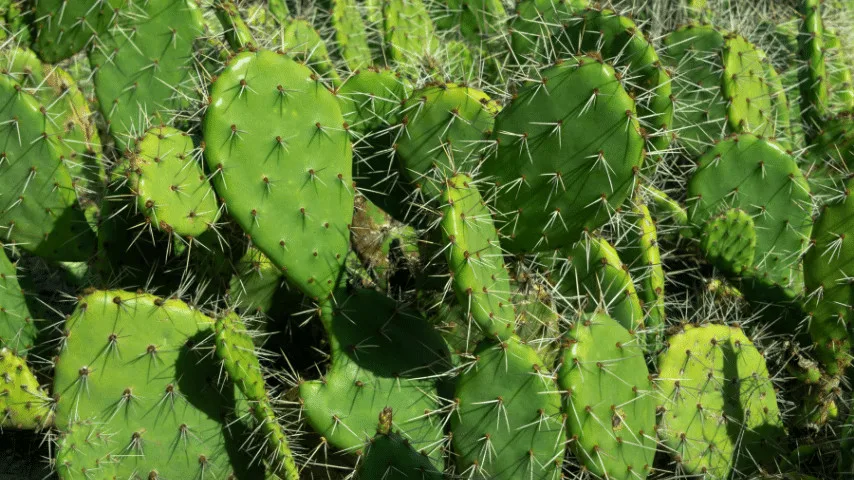
In the United Kingdom, popular houseplants are prickly pear cacti (Opuntia).
They are peculiar, with split plain and round stems covered with spikes on both ends.
Bunny ears get their title because the stems commonly grow in couples and mimic rabbit ears.
Flowers bloom along the stem crest throughout the summertime.
They have enormous, round spikes. Some have microscopic hair that breaks, clings to in skin and is tough to detach.
Opuntia has around 200 different species. Opuntia microdasys, commonly called the polka dot cactus, is the most abundant type,
with groups of bristle-like spikes (called glocids). In the summertime, it blooms with lovely yellow blooms.
Opuntias are arid plants that thrive in warm, parched, sunny circumstances.
Their robust stems are designed to hold water and resist lengthy periods of drought.
This helps make it a fantastic, low-maintenance indoor plant.
3. Lace Aloe
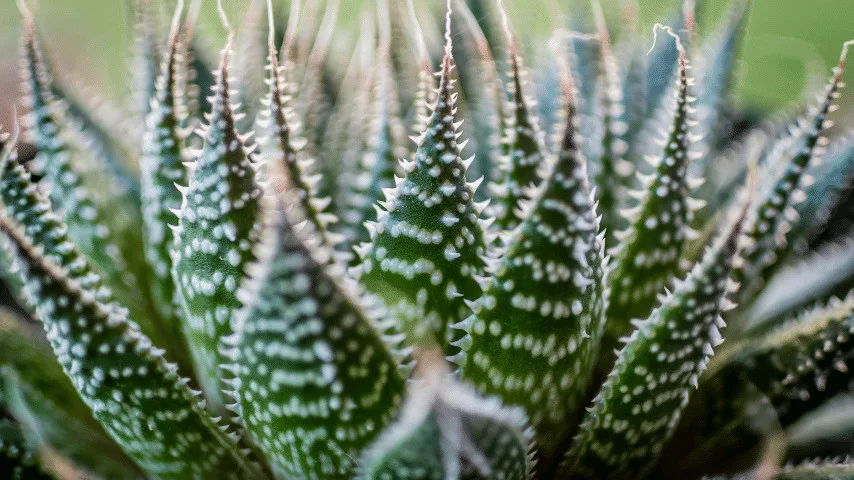
Aristaloe aristata is the actual name. However, most people know it as ‘Aloe aristata.’
The genus Haworthia is more closely linked to the species than the genus Aloe.
Aristaloe aristata, much like China Aster (Callistephus Chinensis), is the only genus in the Aristaloe family.
The lace aloe is known for its beautiful fleshy petals with yellow dots and white spikes on green foliage with frilly borders and delicate white spikes.
It is a blooming plant from the Aristaloe genus native to South Africa. It’s also known as the ‘slippery one’.
The stemless shrub produces slender, smooth, juicy foliage with cylindrical orange blooms. It’s another one-of-a-kind plant that requires special attention.
4. Venus Flytrap
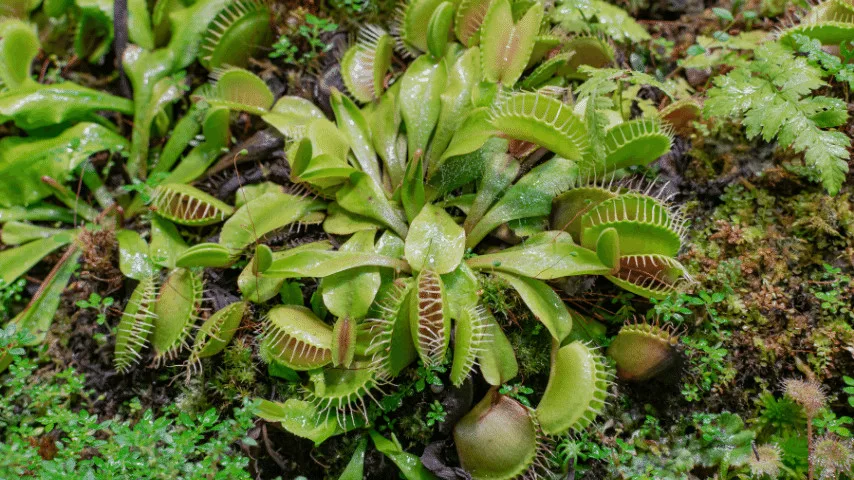
The Venus flytrap is a predatory plant known to catch insects and other bugs.
It has two lobe-shaped leaves that close and trap any flies or insects inside if they touch it. It makes a good garden flytrap.
Trichomes are hair-like extensions on the internal surface of the lobe that induce the ears to slam close when anything comes into touch with it.
Thigmonasty—a nondirectional plant reaction to getting touched—describes this motion.
The cage will only close if the inside of the plant is hit many times, usually by the insect, preventing the plant from squandering effort if no prey is present.
The trap closes entirely around the edges so the prey cannot escape from any opening.
5. Snake Plant
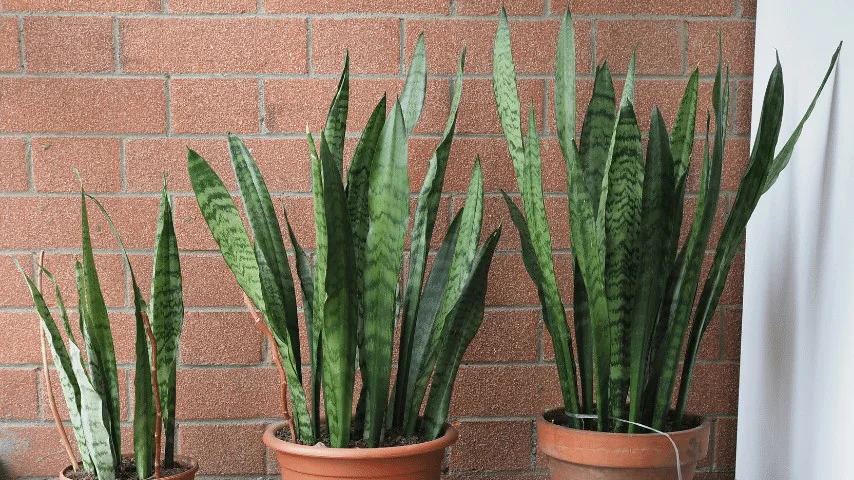
Another succulent with erect spiky foliage is the snake plant or Dracaena trifasciata. It is referred to as Mother-In-Law’s Tongue for those unfamiliar with snake plants.
Dracaena trifasciata is among the most tenacious plants you’ll ever witness, and it can thrive everywhere, even if you’ve abandoned it,
as long as it gets enough moisture and sunshine. It features leathery, prickly leaves with yellow margins that rarely perish
and stay healthy and vibrant as long as they have access to little moisture and light.
They can grow in both strong and moderate light environments, allowing them to flourish in any room of your home.
The snake plant could be utilized to maintain our surroundings safe and green since it helps filter the air we inhale and destroys contaminants,
and is an enticing sight and barrier.
6. Yellow Tower Cactus
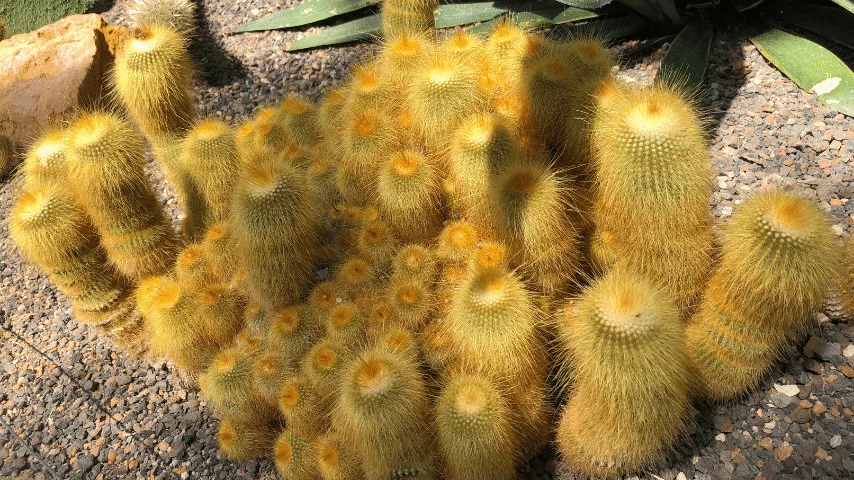
The yellow tower cactus, scientifically known as the Parodia leninghausii, comes from a family of succulents with yellow blooms on top of it.
Like most succulents, this plant prefers more sunlight exposure but more watering than other cacti or succulents.
These are slow-growing plants that can be planted in pots if you wish for them to stay small.
However, gardens can grow into large plants and provide excellent security.
Yellow Tower Cactus produces fruit and can reach a height of 3 feet (91 cm).
7. Aralia Spinosa
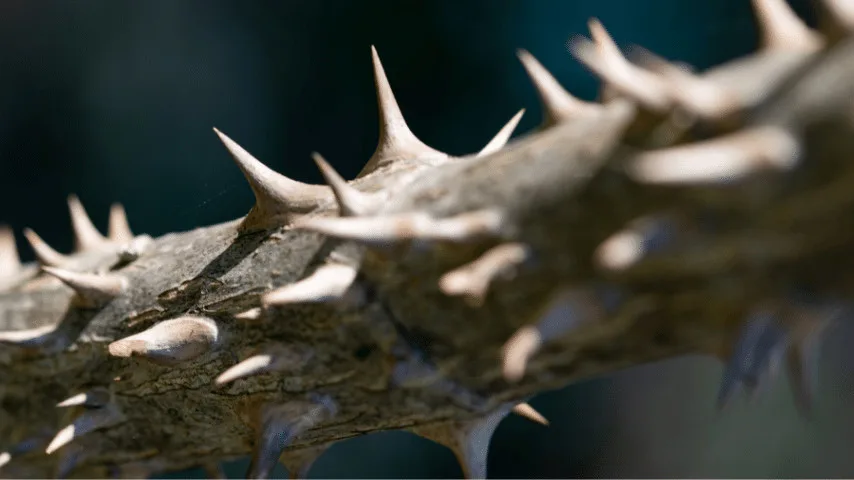
Commonly known as the devil’s walking stick, Aralia Spinosa is a unique-looking shrub or tree with white blooms and dark green leaves with spiky leaflets.
They are tall umbrella-like trees that produce purple berries in autumn. These plants can survive fluctuations in soil types and require moderate sunlight.
The ideal soil is acidic, well-drained soil for Aralia Spinosa. This plant is poisonous to pets like cats, dogs, or horses.
Aralia Spinosa does not require pruning and thrives in drought conditions.
8. Cirsium Vulgare
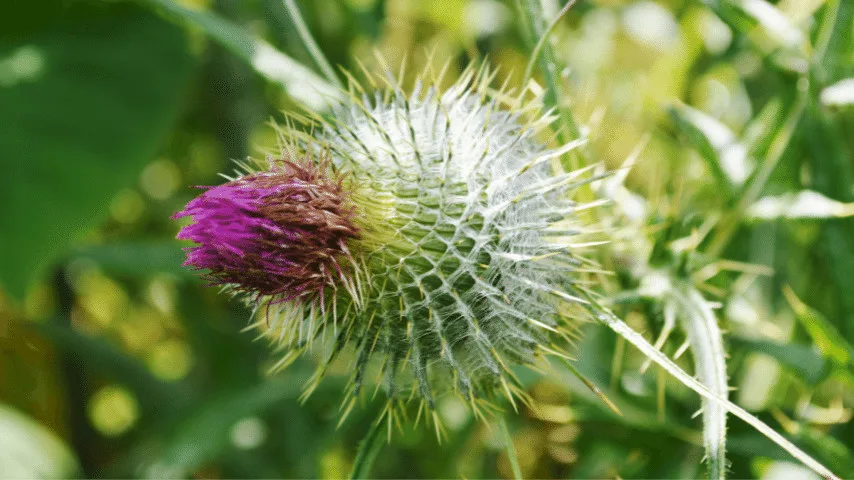
Cirsium Vulgare, commonly known as the Bull’s thistle, is a small rose-like plant with spiky leaves and flower blooms on the top.
It produces seeds from the summer until autumn and can be reproduced only from seeds.
It prefers moist and acidic soil but can tolerate changes in the soil type. The plant thrives in sunlight and cannot tolerate shade.
9. Haworthia
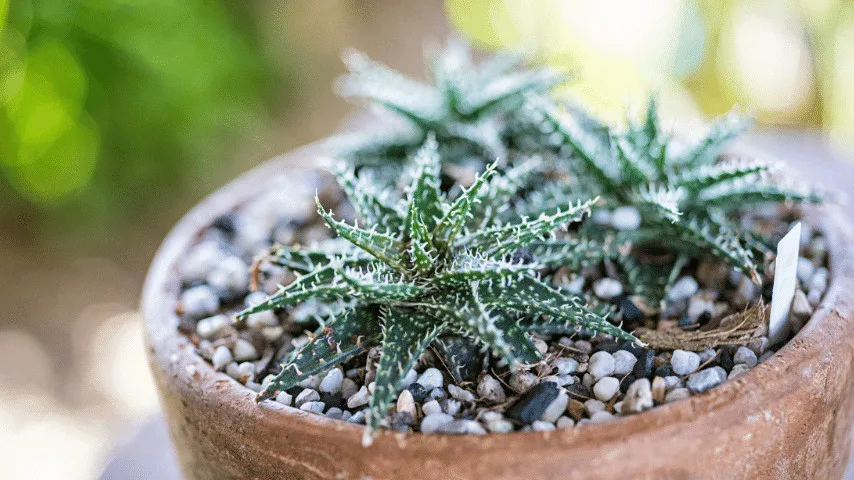
Haworthia is a small pot plant from the succulents family. They are flowering plants with fleshy and spiky leaves.
The leaf’s shapes and texture can vary from plant to plant. These plants grow in warm climates and thrive in sunlight but also require shaded spaces.
They can survive temperatures as extreme as 100 degrees Fahrenheit. However, they cannot withstand low temperatures.
The ideal soil for Haworthia is sandy and well-drained. Watering should be done when the soil dries out, and fertilizer should be used during the spring and summer.
10. Holly Plant
![10 Crazy Plants with Spiky Leaves - Best Spiky List [2024] 1](https://plantophiles.com/wp-content/uploads/2022/05/Holly-Plant-Ilex.jpg.webp)
The Holly plant is a beautiful shrub with bright green, spiky leaves and red berries that attract birds and other pollinators.
They produce clustered flowers and prefer cooler climates and rainfall to settle into the soil.
The soil should be well-drained and moist. They prefer bright sunlight but can tolerate shady spaces.
The female Holly plant produces the berries, and the lush green leaves act as a perfect backdrop in any garden.
Frequently Asked Questions About 10 Plants with Spiky Leaves
Are Holly berries poisonous?
Holly berries are toxic for humans and animals.
How often do you water Parodia?
Since Prodia is succulent, it requires less watering. Just water it once in 2 weeks for the best result.
How long does Cirsium Vulgare live?
The life span of Crisium Vulgare is two years.

![10 Crazy Plants with Spiky Leaves – Best Spiky List [2024]](https://plantophiles.com/wp-content/uploads/2022/05/Plants-with-Spiky-Leaves-720x405.jpg.webp)
